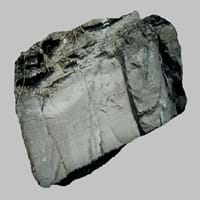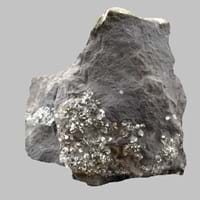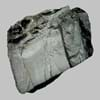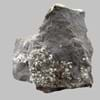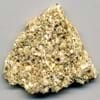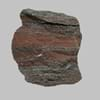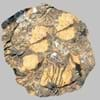Definition
A sedimentary rock, deposit of a submarine turbidity currents and are composed of layered particles
Argillites are highly compact sedimentary or slightly metamorphosed rocks that consist largely or wholly of particles of clay or silt but lack the fissility of shale or the cleavage characteristic of slate
Origin
European Foreland Basins
Unknown
Discoverer
Arnold H. Bouma
Unknown
Etymology
From Medieval Latin turbiditas, from Latin turbidus (turbid). Turbidity current is from 1939
From Latin Argilla (clay) and -ite in English which became agrilla+ -ite = Argillite
Class
Sedimentary Rocks
Sedimentary Rocks
Sub-Class
Durable Rock, Soft Rock
Durable Rock, Soft Rock
Group
Not Applicable
Not Applicable
Other Categories
Coarse Grained Rock, Fine Grained Rock, Opaque Rock
Fine Grained Rock, Opaque Rock
Texture
Mud-rich, Sandy
Clastic, Polished
Color
Black, Brown, Colourless, Green, Grey, Pink
Dark Grey to Black, Pink, Red, White
Durability
Durable
Durable
Scratch Resistant
Yes
Yes
Appearance
Dull and Banded
Rough and Dull
Interior Uses
Bathrooms, Countertops, Decorative Aggregates, Flooring, Homes, Interior Decoration
Decorative Aggregates, Homes, Interior Decoration
Exterior Uses
As Building Stone, As Facing Stone, Paving Stone, Garden Decoration
As Building Stone, Garden Decoration, Office Buildings
Other Architectural Uses
Curbing
Curbing, Whetstones
Construction Industry
As Dimension Stone, Cement Manufacture, Construction Aggregate, for Road Aggregate, Making natural cement
Used for flooring, stair treads, borders and window sills.
Medical Industry
Not Yet Used
Not Yet Used
Antiquity Uses
Artifacts, Monuments, Sculpture
Artifacts, Monuments, Sculpture
Commercial Uses
Cemetery Markers, Creating Artwork
Fire resistant, Used to manufracture paperweights and bookends
Types
Not Available
Not Available
Features
High silica content, Host Rock for Lead
Is one of the oldest rock
Archaeological Significance
Famous Monuments
Data Not Available
Data Not Available
Famous Sculptures
Data Not Available
Data Not Available
Formation
Turbidite is a type of sedimentary rock formed when a river carries or transports pieces of broken rock as it flows. These particles then settle down and are subjected to high temperature and pressures hence forming Turbidite.
An argillite is a fine-grained sedimentary rock mainly composed of clay particles which forms from lithified muds which contain variable amounts of silt-sized particles.
Mineral Content
Coesite, Quartz, Sand
Biotite, Chlorite, Feldspar, Micas, Muscovite or Illite, Plagioclase, Pyrite, Quartz
Compound Content
CaO, Carbon Dioxide, MgO
Iron(III) Oxide, Potassium Oxide, MgO, Silicon Dioxide
Types of Metamorphism
Not Applicable
Not Applicable
Types of Weathering
Biological Weathering, Chemical Weathering, Mechanical Weathering
Biological Weathering
Types of Erosion
Chemical Erosion, Coastal Erosion, Sea Erosion, Water Erosion, Wind Erosion
Chemical Erosion
Grain Size
Fine to Coarse Grained
Fine Grained
Fracture
Splintery
Conchoidal to Uneven
Streak
White, Greenish White or Grey
White to Grey
Porosity
Very Less Porous
Highly Porous
Luster
Metallic
Waxy and Dull
Compressive Strength
Not Available
Cleavage
Disjunctive
Slaty
Specific Gravity
2.46-2.73
2.56-2.68
Transparency
Opaque
Opaque
Density
1.6-2.5 g/cm3
2.54-2.66 g/cm3
Resistance
Heat Resistant
Heat Resistant, Impact Resistant
Deposits in Eastern Continents
Asia
Not Yet Found
Bangladesh, China, India, Russia
Africa
Western Africa
Ethiopia, Kenya, Morocco, South Africa, Tanzania
Europe
Austria, Belarus, Romania, Switzerland, United Kingdom
Austria, France, Germany, Greece, Italy, Romania, Scotland, Spain, Switzerland
Others
Not Yet Found
Not Yet Found
Deposits in Western Continents
North America
Canada, USA
USA
South America
Brazil, Colombia
Bolivia, Chile, Colombia, Ecuador, Peru, Venezuela
Deposits in Oceania Continent
Australia
New Zealand, Western Australia
New South Wales, New Zealand, Queensland, Victoria, Western Australia
All about Turbidite and Argillite Properties
Know all about Turbidite and Argillite properties here. All properties of rocks are important as they define the type of rock and its application. Turbidite and Argillite belong to Sedimentary Rocks.Texture of Turbidite is Mud-rich, Sandy whereas that of Argillite is Clastic, Polished. Turbidite appears Dull and Banded and Argillite appears Rough and Dull. The luster of Turbidite is metallic while that of Argillite is waxy and dull. Turbidite is available in black, brown, colourless, green, grey, pink colors whereas Argillite is available in dark grey to black, pink, red, white colors. The commercial uses of Turbidite are cemetery markers, creating artwork and that of Argillite are fire resistant, used to manufracture paperweights and bookends.
